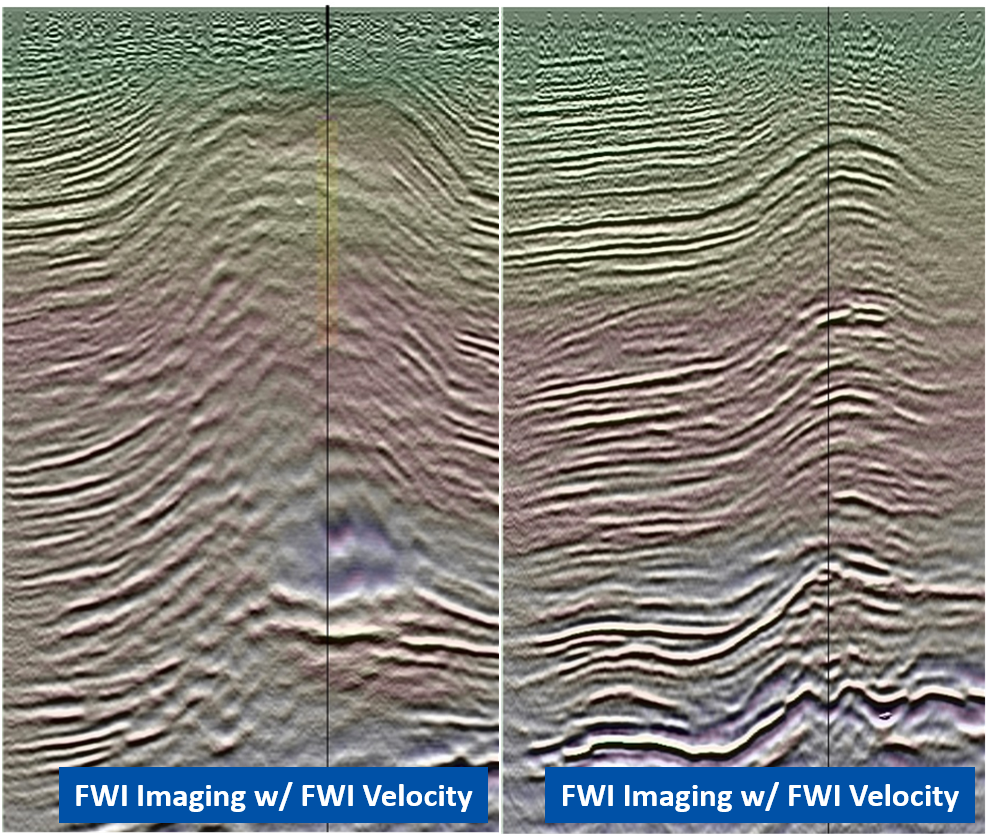Full Waveform Inversion (FWI) Imaging
In-Depth Proprietary Technology
Full-Waveform Inversion (FWI) is a sophisticated, modern seismic imaging and velocity modeling approach that has overtaken Reverse-Time Migration (RTM) as the premier method for high-resolution, high-fidelity subsurface imaging. Here at In-Depth, we apply an innovative alternating K-Tomo and FWI workflow to create a final velocity model, fully utilizing the benefits of both modeling approaches.
Armed with a completed, high-resolution velocity model, we can apply any conventional form of pre-stack depth migration (e.g. Kirchhoff, Gaussian Beam, RTM) to produce a final image. Alternatively, we can calculate the reflectivity series and apply an iterative inversion scheme to produce a final FWI image directly from the completed velocity model and recorded data.
Fig. 1. Iterative alternating FWI and K-Tomo workflow. Due to the FWI model nullspace, FWI alone may have difficulty fully capturing certain features, such as the high amplitude events indicated by the arrows. Alternating between K-Tomo and FWI allows FWI to converge far more efficiently, without becoming trapped in local minima.
Fig. 2. Kirchhoff PSDM with Conventional Tomo velocities (left) vs FWI Imaging with FWI velocities (right). In both cases, FWI Imaging produces noticeably superior results with clearer structure and dramatically reduced noise.


